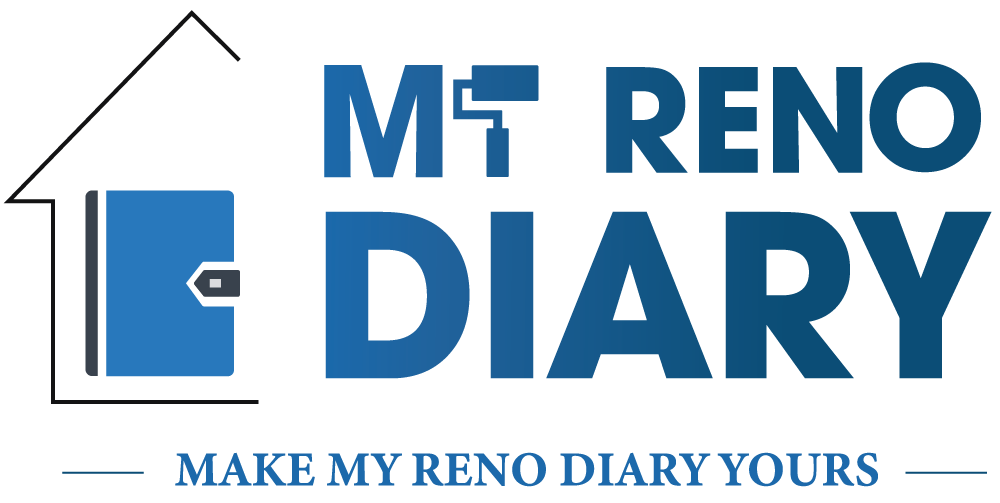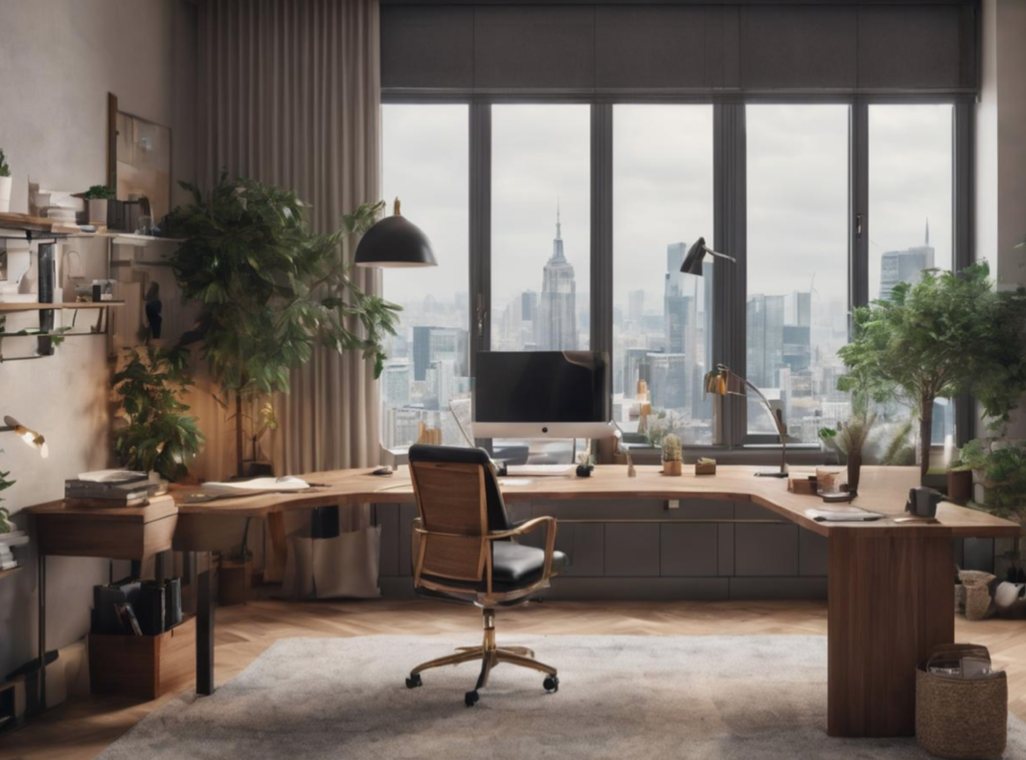Elevate Your Productivity: Innovative Home Office Interior Design Concepts
Until recently, the presence of an office in the house was a sign of luxury or workaholism. With the advent of the pandemic, the situation has changed dramatically. For many, the workplace has moved home. An office or work area has become necessary in almost every house and apartment. The thoughtful interior design of the home office contributes to fruitful and comfortable work.
So, do you dream of a cozy home office, but there is insufficient space for a full-fledged office? We show how to equip a comfortable workplace almost anywhere in the house.
How To Design an Office Layout for Maximum Productivity?
The interior design of your office, its size, and furnishings play a crucial role in ensuring a conducive atmosphere for work. Let’s explore the essential principles of modern office design that optimize functionality and comfort.
Strategic Placement
The cornerstone of an effective home office design is its location. You have the liberty to choose any room or area within your house for your workspace. It’s paramount that this location supports your productivity. Whether you opt for a dedicated room away from household distractions or a shared space in a high-traffic area, the placement must enhance your work experience.
Functionality
An office is a place for focus, productivity, and decision-making. Its interior should prioritize functionality, creating an environment that minimizes distractions. A minimalist approach is often favored in modern office design, ensuring a clean and uncluttered space where your focus can remain undisturbed.
Minimalism
Minimalism is a hallmark of contemporary design, promoting a clean and uncluttered workspace. This design philosophy extends to both decor and furnishings. Invest in wireless devices to reduce visual clutter from cords and wires. Conceal essential wires neatly under or behind your desk. Consider incorporating hidden storage solutions within your home office design for a streamlined, clutter-free environment that encourages productivity.
Adequate Space
While minimalism is key to a clean and efficient home office, ensure there’s enough space for comfort and mobility. You should be able to move freely within your workspace, adjust your chair comfortably, and stretch your body as needed. Cramped quarters can stifle productivity and motivation.
Ergonomic Considerations
Your home office furniture is vital to your well-being. Invest in an ergonomic chair and desk designed for long hours of comfortable use. Prioritize ergonomics to maintain good posture and minimize stress on your spine and muscles. This will keep you refreshed and energized throughout the day.
Effective Lighting
Adequate lighting is a must for a productive workspace. Natural light is ideal, but supplement it with appropriate artificial lighting. Neutral wall colors and sheer window coverings ensure a well-lit and bright space. Maintain a balance to reduce glare without darkening the room.
Storage Solutions
An organized office is a productive office. Tailor your home office design to incorporate sufficient storage and shelving for your needs. Easy access to reference materials enhances efficiency, reducing the need to leave your workspace to retrieve essential items.
Personalization
While a clean and minimalist workspace fosters productivity, you can still infuse your personality into the design. Incorporate your chosen interior design style and decor elements that inspire and uplift you. Personal touches, such as artwork or decor items, create a workspace that’s both functional and appealing.
Comfortable Meeting Areas
If your work involves physical meetings with clients, allocate a suitable area in your home office for this purpose. Ensure it’s professional and comfortable. For online meetings, maintain a clean, uncluttered background.
Effective Layout
Before furnishing your home office, create a floor plan to optimize space usage. Various online tools help you plan and select the best furniture for your workspace. This thoughtful layout ensures your office design caters to your specific needs and preferences.
How To Design Your Home Office? The Practical Ideas
Designing a home office is a creative endeavor. Here are some practical ideas and insights into how to maximize your workspace based on various room options within your house.
Small Office in the Living Room
Setting up a small office in your living room is a pragmatic compromise. While it may be less isolated, good lighting and well-defined workspace boundaries can create a favorable work environment. Consider space-saving solutions like floating tabletops to maximize functionality.
Desk in the Corner
Corners offer opportunities for creative space utilization. A corner desk can provide a sense of coziness and make the most of limited space. Opt for a compact desk with side wings for workspace depth and adequate details.
Small Workspace in the Bedroom
While having a home office in the bedroom is often discouraged, it can lead to better concentration due to fewer distractions. Ensure that your bedroom setup positions your desk to avoid a direct view of the bed, promoting a focused work mindset.
Home Office on the Balcony
Balconies can provide a cozy and scenic home office setup. Be prepared to invest in window blinds or curtains to manage light conditions effectively. The payoff includes a picturesque view and a private workspace.
Small Office on the Windowsill
Window sills can be excellent spaces for a small office setup. Abundant natural light and efficient use of space make this a bright and productive workspace. Ensure your desk location minimizes glare, and consider installing shelves for storage.
Home Office for Two
Couples can optimize productivity by sharing a workspace with a partner. A double-sided partner desk or an extended tabletop can accommodate dual occupancy. Maintain separate, organized spaces for each individual to work efficiently while spending breaks together.
Behind the Bar
A bar counter can serve a dual purpose by providing a workspace and an area for dining or coffee breaks. This multifunctional approach is ideal for small studios or those juggling household and work duties.
How To Enhance Your Home Office Comfort and Professionalism?
To create a comfortable and professional home office, consider these steps:
- Ergonomics: Invest in an ergonomic chair and desk for comfortable sitting.
- Organization: Keep your desk and office space organized to increase efficiency.
- Lighting: Ensure proper lighting, both natural and artificial, for a well-lit workspace.
- Personalization: Personalize your office with decor that inspires and motivates you.
- Temperature Control: Maintain a comfortable temperature for optimal productivity.
- Cleanliness: Keep your workspace clean and uncluttered for a professional atmosphere.
Designing a home office is a personal journey, and your space should reflect your unique needs and preferences. Whether you have a dedicated room or a small corner to work with, the right design and layout can optimize your productivity and create a pleasant, efficient workspace. So, take inspiration from these ideas and craft a home office that suits your style and fosters your work-life balance.”
In the evolving landscape of remote work, your home office’s design and functionality are more important than ever. As you embark on this journey of creating the perfect workspace, remember that the professionals at MRD Interior Design are here to transform your vision into reality. With their expertise in crafting home offices that blend comfort, style, and productivity, MRD Interior Design can help you achieve the ideal workspace that suits your unique needs. Don’t wait any longer to make your home office a place where inspiration meets innovation. Contact MRD Interior Design today and take the first step toward elevating your work-from-home experience.



